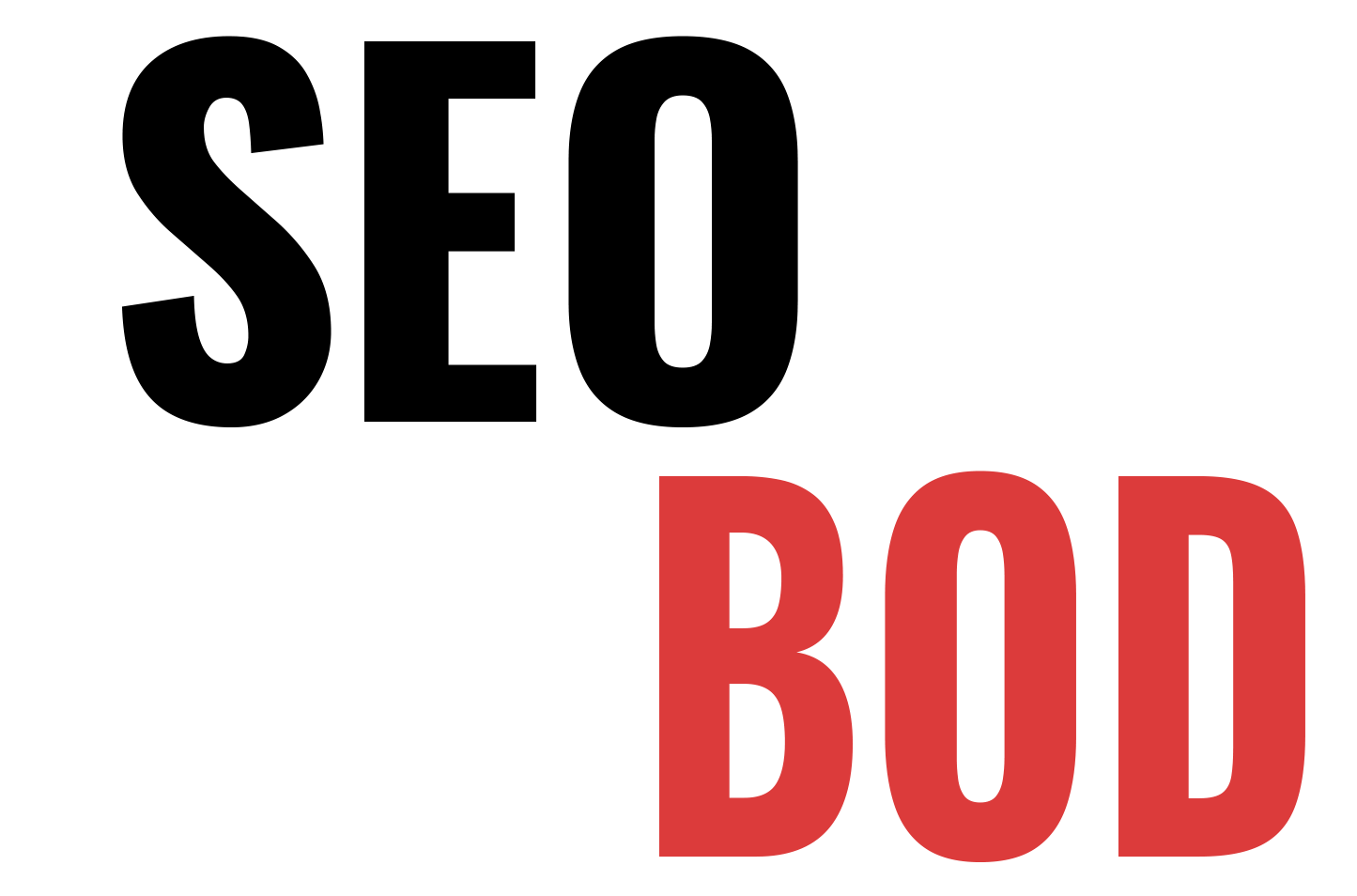In today’s digital landscape, having a website is not enough. It’s crucial to ensure that your online presence is easily discoverable by search engines and drives relevant traffic to your site. This is where SEO (Search Engine Optimization) comes into play. In this blog post, we will explore the basics of SEO and how you can leverage it to boost your website’s visibility. From understanding the fundamentals of SEO to choosing the right keywords and creating engaging content, we’ll cover everything you need to know to effectively optimize your website and improve its rankings in search engine results. Let’s dive in and unlock the power of SEO!
Understanding Seo Basics
Understanding SEO Basics
Search Engine Optimization (SEO) is a crucial aspect of digital marketing and website optimization. It involves various strategies and techniques to improve a website’s visibility in search engine rankings. By implementing effective SEO practices, website owners can increase organic traffic, attract more potential customers, and ultimately achieve higher conversion rates. In this blog post, we will explore the fundamental concepts and principles of SEO that every website owner or marketer should understand.
Importance of SEO
SEO plays a vital role in enhancing the online presence of a website. With millions of websites competing for attention in the digital space, businesses need to ensure that their websites are optimized to attract organic traffic. By implementing SEO techniques, websites can rank higher in search engine results pages (SERPs), making it easier for potential customers to find them. Higher visibility in search engines not only increases website traffic but also builds credibility and trust among users.
Key Components of SEO
SEO encompasses various elements that work together to improve a website’s ranking. These components include keyword research, content optimization, meta tags, URL structure, internal and external linking, image optimization, and user experience. Understanding these components and how they interconnect is essential for successful SEO implementation.
Keyword Research
Choosing the right keywords is a crucial step in SEO. It involves researching and identifying the words or phrases that potential customers are likely to use when searching for products or services similar to what your website offers. By incorporating these keywords strategically into your website’s content, titles, headings, and meta tags, you can increase the chances of your website showing up in relevant search results.
Content Optimization
High-quality and relevant content is at the heart of effective SEO. Search engines prioritize websites that provide valuable and engaging content to users. By creating informative and well-structured content, you can improve your website’s visibility and attract more organic traffic. Optimizing your content with relevant keywords, headings, and subheadings will further enhance its search engine visibility.
Meta Tags and URL Structure
Meta tags are HTML tags that provide information about a webpage to search engines. Optimizing meta tags, including the title tag and meta description, can significantly impact a website’s search engine ranking. Similarly, creating SEO-friendly URLs that include relevant keywords can also improve a website’s visibility and click-through rates in search results.
Internal and External Linking
Link building is an essential SEO strategy. Internal linking involves connecting different pages within your website, improving navigation and distributing link equity. External linking refers to getting backlinks from other reputable websites, which can boost your website’s credibility and authority. Both internal and external linking contribute to improved search engine rankings.
Image Optimization and User Experience
Images play a significant role in enhancing user experience on a website. Optimizing images by reducing file size, using descriptive alt text, and incorporating relevant keywords can improve a website’s SEO performance. Additionally, ensuring that your website is mobile-friendly, loads quickly, and provides a seamless browsing experience contributes to improved rankings.
Conclusion
Understanding the basics of SEO is crucial for any website owner or marketer. By implementing effective SEO strategies, such as comprehensive keyword research, content optimization, and user-friendly design, website owners can improve their website’s visibility, attract more organic traffic, and ultimately drive better business results. Stay tuned for our upcoming blog posts, where we will delve deeper into each of these SEO components and provide actionable tips for optimizing your website.
| 1. | Understanding SEO Basics |
| 2. | Choosing the Right Keywords |
| 3. | Writing Engaging and Relevant Content |
Choosing The Right Keywords
When it comes to optimizing your website for search engines, one of the most crucial steps is choosing the right keywords. Keywords are the terms or phrases that users type into search engines when looking for information or products. By selecting relevant and targeted keywords, you can increase your website’s visibility and attract more organic traffic. In this blog post, we will discuss the importance of choosing the right keywords and provide you with some tips on how to find the most effective ones for your website.
First and foremost, it is essential to understand the significance of keyword research in your SEO strategy. Proper keyword research allows you to identify the words or phrases that your target audience is using to find products or services similar to yours. By optimizing your website with these specific keywords, you increase your chances of ranking higher in search engine results pages (SERPs).
One way to start your keyword research is by brainstorming a list of potential keywords related to your business or industry. Think about the terms your customers are likely to use when searching for products or services like yours. It’s important to strike a balance between broad keywords that attract a larger audience and narrow keywords that target a specific niche.
- Blog Posts for SEO: Keywords are pivotal in enhancing the SEO performance of your blog posts. By skillfully incorporating keywords into your content, you can improve your search engine rankings and allow your blog to reach a wider audience. Ensure that your blog posts are optimized with relevant and targeted keywords to maximize their impact.
- Utilizing Strategic Keyword Placement: The placement of keywords in your content plays a vital role in SEO. It’s important to strategically place keywords in your blog titles, headings, meta descriptions, and throughout your content. This will signal to search engines that your content is highly relevant to a user’s search query.
- Creating URL Structures for SEO: Another important aspect of SEO is optimizing your URL structures. Including relevant keywords in your URLs can help search engines understand what your page is about and improve its visibility.
| Keyword Placement | URL Structure |
|---|---|
| Strategically placing keywords in headings, titles, and meta descriptions | Creating user-friendly URLs that include targeted keywords |
| Optimizing image alt text with relevant keywords | Using hyphens to separate words in URLs |
| Utilizing internal and external linking strategies to enhance keyword relevance | Avoiding lengthy and confusing URLs |
In conclusion, choosing the right keywords is a fundamental step in optimizing your website for search engines. Conducting thorough keyword research and strategically integrating relevant keywords into your content, headings, and URLs can significantly improve your website’s visibility and organic traffic. Remember to keep your target audience in mind and strike a balance between broad and narrow keywords to effectively reach your desired audience.
Writing Engaging And Relevant Content
When it comes to writing blog posts for SEO, one of the most important aspects to consider is creating engaging and relevant content. Content that captures the attention of your readers and provides them with value will not only keep them on your website longer but also increase the chances of them returning in the future. So, how can you ensure that your content is both engaging and relevant? Let’s take a closer look.
Firstly, it’s crucial to understand your target audience and what type of content they are looking for. Conducting thorough keyword research can help you identify topics and themes that are popular among your audience. By understanding what keywords they are searching for, you can tailor your content to meet their needs and provide them with valuable information.
Secondly, writing in a conversational and relatable tone can help you engage with your readers on a personal level. Use storytelling techniques, anecdotes, and examples to make your content more relatable and enjoyable to read. This will make your readers feel like they are having a conversation with you rather than just reading a generic article.
| Utilize Strategic Keyword Placement | Optimizing Image Alt Text | Improving Readability and User Experience |
| Internal and External Linking Strategies | Promoting Social Sharing and Backlinks | Writing Engaging and Relevant Content |
Lastly, don’t forget to optimize your content for SEO. Include relevant keywords in your title, headings, and throughout your article. However, it’s important to strike a balance between optimizing for SEO and providing value to your readers. Keyword stuffing can negatively impact the readability and overall user experience of your content, so use keywords sparingly and naturally.
In conclusion, writing engaging and relevant content is key to improving your blog’s SEO performance. By understanding your audience, writing in a conversational tone, using subheadings, incorporating multimedia elements, and optimizing for SEO, you can create content that both captivates your readers and ranks well in search engine results.
Crafting Seo-Friendly Headings
Crafting SEO-Friendly Headings
When it comes to optimizing your website for search engines, every little detail matters. One often overlooked aspect of SEO is the importance of crafting SEO-friendly headings. Headings serve as a roadmap for both search engine crawlers and website visitors, providing valuable information about the content on a page. By following a few best practices for crafting headings, you can improve your website’s SEO and enhance the overall user experience.
1. Use Relevant Keywords: Incorporate relevant keywords into your headings to help search engines understand the context of your content. This allows search engines to index your pages more accurately and improves your chances of ranking higher in search results. However, it is crucial not to overstuff keywords, as this can lead to penalties from search engines and make your content less reader-friendly.
2. Structure Your Headings: Utilize heading tags (H1, H2, H3, etc.) to structure your content hierarchically. The H1 tag should be reserved for the main title of the page, while H2, H3, and so on should be used to organize subheadings. This not only helps search engines understand the content’s structure but also enhances readability for your website visitors.
3. Be Descriptive and Engaging: Craft headings that accurately describe the content and engage your readers. This not only grabs their attention but also helps search engines determine the relevance of your page. Avoid generic headings and strive to create unique and captivating headings that compel users to click and explore further.
Crafting SEO-friendly headings is a crucial component of optimizing your website for search engines. By incorporating relevant keywords, structuring your headings, and creating engaging and descriptive headings, you can improve your website’s visibility and attract more organic traffic. Remember to strike a balance between optimization and user experience to ensure your headings appeal to both search engines and readers.
Optimizing Meta Descriptions
Meta descriptions have a significant impact on search engine optimization (SEO). These snippets of text, averaging around 160 characters, appear below the title tag in search engine results. Optimizing meta descriptions is crucial for driving organic traffic to your website. When creating compelling meta descriptions, keep in mind the following essential strategies for improving your website’s visibility:
By optimizing your meta descriptions with relevant keywords, captivating language, and concise summaries, you can dramatically improve your website’s click-through rate (CTR) and attract more organic traffic. Ultimately, a well-optimized meta description can entice potential visitors to choose your website over others in the search results.
| Keyword | Definition |
|---|---|
| SEO | SEO stands for Search Engine Optimization. It refers to the process of improving a website’s visibility and ranking on search engine result pages, ultimately driving organic traffic. |
| Meta Descriptions | Meta descriptions are HTML attributes that provide concise summaries of a webpage’s content. They appear below the title tag in search engine results and play a crucial role in attracting organic traffic. |
| Organic Traffic | Organic traffic refers to website visits that are driven by unpaid search results. It excludes direct traffic or visits from paid advertising sources. |
Creating Url Structures For Seo
Creating URL Structures for SEO
Creating a search engine optimized URL structure is an essential part of any successful SEO strategy. When search engines crawl websites, they pay close attention to the structure and content of the URLs. By optimizing your URL structure, you can improve your website’s visibility in search engine results pages (SERPs) and attract more organic traffic. In this blog post, we will discuss the importance of creating SEO-friendly URLs and provide some best practices to help you optimize your website’s URL structure.
One of the key benefits of having a well-structured URL is that it helps search engines understand the content and context of your web pages. A clear and descriptive URL can give search engines valuable information about the topic or purpose of a page. This can significantly improve your chances of ranking higher in relevant search queries.
When creating URLs for your website, it’s important to choose keywords that accurately reflect the content on the page. Including relevant keywords in your URLs can help search engines and users understand what to expect when they click on your link. For example, if you have a blog post about “10 Tips for SEO Success,” a URL like “yourwebsite.com/10-tips-seo-success” is much more descriptive and user-friendly compared to something like “yourwebsite.com/article123.”
- Blog Posts for SEO: When creating URL structures for blog posts, it’s essential to include relevant keywords in the URL to optimize it for SEO. Utilizing strategic keyword placement in the URL can improve the visibility of your blog posts in search engine results.
- Utilizing Strategic Keyword Placement: Strategically placing keywords in your URLs can have a positive impact on your website’s SEO. By including relevant keywords in your URL structure, you increase the chances of ranking higher in search engine results for those specific keywords.
- Promoting Social Sharing and Backlinks: An SEO-friendly URL structure can also help with social sharing and backlinks. When users share your content on social media platforms or other websites, a descriptive and user-friendly URL can attract more clicks and encourage others to share and link to your content.
| URL Structure Mistakes to Avoid |
| Avoid using unnecessarily long URLs that contain multiple subfolders and irrelevant information. Long and complex URLs can confuse both search engines and users, making it harder for them to understand the content of your page. |
| Avoid using special characters, symbols, or spaces in your URLs. Stick to alphanumeric characters and hyphens to ensure compatibility across different platforms and avoid confusing search engines. |
| Avoid dynamically generated URLs that contain session IDs or other parameters. These types of URLs are often considered less user-friendly and can negatively impact your website’s SEO. |
In conclusion, creating an SEO-friendly URL structure is crucial for improving your website’s visibility in search engine results. By using relevant keywords, avoiding common URL structure mistakes, and making your URLs descriptive and user-friendly, you can optimize your website for search engines and attract more organic traffic.
Internal And External Linking Strategies
Linking strategies play a crucial role in search engine optimization (SEO), as they help search engines understand the relationships between different web pages. There are two main types of linking strategies that website owners can utilize to improve their SEO: internal linking and external linking.
Internal linking
Internal linking refers to the practice of linking one page of a website to another page within the same website. These links are often used to navigate users to other relevant content on the website and help search engines discover and index important pages. When implementing internal links, it is important to consider using relevant anchor text that describes the linked page. This helps search engines understand the content of the linked page and its relationship to the anchor text. Additionally, organizing a website’s structure with a logical hierarchy can aid in effective internal linking.
External linking
External linking, also known as outbound linking, involves linking to other websites from your own website. When done strategically, external links can contribute to the overall authority and credibility of your website. It is important to link to reputable sources that provide valuable and relevant information to your readers. By linking to authoritative websites, search engines may consider your website as a trusted source of information. External linking also provides an opportunity for other websites to link back to your website, creating valuable backlinks that can significantly impact your website’s SEO.
Benefits of internal and external linking strategies for SEO
Internal and external linking strategies have several benefits for SEO. Implementing these strategies helps search engines crawl and index your website more effectively, improving the visibility and ranking of your web pages. Internal links assist in spreading link equity throughout your website, enhancing the authority of individual pages. Well-placed external links to reputable sources demonstrate to search engines that your website provides valuable information and helps establish your website’s credibility. Furthermore, external links can drive additional traffic to your website from referral sources, increasing the exposure and potential conversions.
In conclusion
Internal and external linking strategies are essential components of a successful SEO campaign. By properly implementing these strategies, website owners can improve their website’s visibility, authority, and overall user experience. Remember to optimize your internal links with relevant anchor text, create a logical website structure, and link to reputable external sources. Incorporating these linking strategies into your SEO efforts can significantly boost your website’s search engine rankings and drive more organic traffic.
Optimizing Image Alt Text
The importance of optimizing image alt text for SEO cannot be overstated. Alt text, or alternative text, is used to describe the content of an image on a webpage. It not only provides accessibility to visually impaired users, but it also plays a crucial role in improving search engine optimization.
Blog Posts for SEO should always include a descriptive alt text for each image used. This allows search engines to understand the context and relevance of the image, which in turn helps in improving the visibility of the webpage in search engine rankings. Additionally, alt text also helps when images fail to load, providing users with a textual description of the image.
When optimizing the alt text, it is important to consider the keywords that are relevant to the image and the webpage’s content. By incorporating strategic keyword placement in the alt text, search engines can better comprehend the content and relevance of the image. However, it is crucial to keep the alt text natural and descriptive, avoiding keyword stuffing or any attempts to manipulate search engine rankings.
| Improved Accessibility | Enhanced User Experience | Better Search Engine Rankings |
|---|---|---|
| By providing descriptive alt text, visually impaired users can utilize screen readers to understand and interpret the image content. | Alt text provides users with a textual description of the image, improving the overall user experience on the webpage. | Well-optimized alt text helps search engines understand the context of the image and improve the webpage’s visibility in search engine rankings. |
Utilizing Strategic Keyword Placement
When it comes to optimizing your website for search engines, one of the most important factors to consider is strategic keyword placement. Keywords are the words and phrases that users enter into search engines when looking for information. By strategically placing these keywords throughout your website’s content, you can improve your search engine rankings and attract more targeted traffic to your site. In this blog post, we will discuss the importance of strategic keyword placement and provide you with some tips on how to effectively use keywords to enhance your website’s SEO.
1. Incorporate Keywords in your Page Titles and Headings
One of the key places to include your targeted keywords is in your page titles and headings. These elements carry significant weight in search engine algorithms and can greatly impact your website’s visibility. When creating page titles, make sure to include relevant keywords that accurately describe the content of your page. Additionally, incorporate keywords in your headings to give search engines a clear understanding of the main topics covered on your pages.
2. Sprinkle Keywords Naturally throughout your Content
While it is important to include keywords in your content, it is equally important to do so naturally. Keyword stuffing, which is the practice of excessively adding keywords to manipulate search engine rankings, is highly discouraged and can lead to penalties from search engines. Instead, focus on including keywords in a way that feels organic and provides value to your readers. Remember, the primary goal is to create engaging and relevant content that both search engines and users will find valuable.
3. Optimize your URL Structures
Another effective way to strategically place keywords is by optimizing your website’s URL structures. A well-structured URL that includes keywords can help search engines better understand the content of your web page. Consider incorporating relevant keywords in your URLs, while keeping them concise and descriptive. This will not only improve your SEO but also make it easier for users to navigate and share your content.
4. Utilize Keywords in Image Alt Text
Images play a crucial role in website design and user experience. To optimize your images for search engines, it is essential to utilize keywords in the image alt text. Alt text is a brief description of the image that is displayed when the image cannot be loaded. Including relevant keywords in your alt text can improve the accessibility of your website for visually impaired individuals and contribute to your overall SEO efforts.
By utilizing strategic keyword placement throughout your website, you can significantly enhance your SEO efforts and increase your chances of ranking higher in search engine results. Remember to choose relevant keywords, incorporate them naturally in your content, optimize your URL structures, and utilize keywords in image alt text. These strategies, when executed effectively, will help drive targeted traffic to your website and improve your overall online visibility.
Improving Readability And User Experience
When it comes to creating content for your blog, it’s important to not only focus on search engine optimization (SEO) but also on improving readability and user experience. After all, what good is a high-ranking blog post if it’s difficult for your readers to understand or enjoy? In this blog post, we will explore some key strategies to enhance the readability and user experience of your blog.
1. Use Clear and Concise Language
In order to improve readability, it’s essential to use clear and concise language in your blog posts. Avoid using jargon or technical terms that may confuse your readers. Instead, opt for simple and straightforward language that is easy to understand. Break down complex ideas into smaller, digestible chunks to make it easier for your readers to follow along.
2. Organize Your Content Effectively
Another key aspect of improving readability and user experience is to organize your content in a logical and easy-to-navigate manner. Use headings, subheadings, and bullet points to break up your text and make it more scannable. This allows readers to quickly find the information they are looking for without having to sift through lengthy paragraphs.
3. Enhance Readability with Visual Elements
Visual elements such as images, infographics, and videos can greatly enhance the readability and user experience of your blog post. They provide a welcome break from text-heavy content and offer a more engaging and visually appealing experience for your readers. However, be mindful of optimizing images for SEO by using descriptive alt text.
4. Use a Legible Font and Proper Formatting
When it comes to readability, font choice and formatting play a crucial role. Select a font that is easy to read, such as Arial, Helvetica, or Times New Roman. Avoid using fancy or decorative fonts that may hinder readability. Additionally, consider using a larger font size and ample line spacing to make your content easier on the eyes.
5. Prioritize Mobile-Friendly Design
In today’s digital age, a significant portion of internet users access content through their mobile devices. Therefore, it is imperative to prioritize mobile-friendly design to ensure a seamless reading experience across different screen sizes. Make sure your blog post is responsive and adapts well to various devices.
In conclusion, while optimizing your blog post for SEO is essential, it is equally important to focus on improving readability and user experience. By using clear language, organizing your content effectively, incorporating visual elements, using legible fonts, and prioritizing mobile-friendly design, you can create a blog post that not only ranks well but also engages and delights your readers.
Promoting Social Sharing And Backlinks
Blog Posts for SEO
Promoting Social Sharing and Backlinks is a crucial aspect of search engine optimization (SEO). In this blog post, we will explore the importance of social sharing and backlinks in improving your website’s ranking on search engine results pages (SERPs) and increasing website traffic. By understanding how social sharing and backlinks work, you can effectively promote your content and build a strong online presence.
Understanding Social Sharing
One of the key factors in promoting your content is social sharing. Social sharing refers to the act of users sharing your content on various social media platforms such as Facebook, Twitter, LinkedIn, and Pinterest. When users share your content, it increases its visibility, reaches a wider audience, and has the potential to go viral. Therefore, it is essential to make your blog posts easily shareable by including social sharing buttons on your website.
Backlinks and Their Importance
Backlinks are another vital element in promoting your website and improving your SEO efforts. A backlink is a link that directs users from another website to your own. When a reputable website links back to your content, it signals to search engines that your website is trustworthy and authoritative. Thus, backlinks play a significant role in boosting your website’s ranking on SERPs.
Moreover, backlinks not only improve your search engine rankings but also drive referral traffic to your website. When users find a backlink to your website on another site, they are more likely to click on it and visit your website, increasing your chances of gaining new readers, customers, or clients.
Strategies for Promoting Social Sharing and Acquiring Backlinks
Now that we understand the importance of social sharing and backlinks, let’s discuss strategies to promote them.
1. Create Engaging and Shareable Content: By producing high-quality, relevant, and engaging content, you increase the likelihood of users wanting to share it on social media platforms. Make sure your content provides value to your target audience, encourages discussion, and offers unique insights.
2. Build Relationships with Influencers: Collaborating with influencers in your industry can help you acquire valuable backlinks. When influencers link to your content or mention your brand, it not only boosts your website’s credibility but also exposes your content to their loyal followers.
3. Guest Blogging: Writing guest blog posts for reputable websites within your niche allows you to include backlinks to your own website. This not only drives traffic to your site but also improves your website’s SEO by demonstrating to search engines that other respected websites find your content valuable.
4. Encourage Social Sharing: Make it easy for users to share your content by prominently displaying social sharing buttons on your website. Additionally, including a call-to-action asking readers to share your content can motivate them to spread the word.
In Conclusion
Promoting social sharing and acquiring backlinks are essential strategies for improving your website’s visibility and driving organic traffic. By implementing the strategies mentioned above, you can optimize your content for social sharing, build valuable backlinks, and enhance your overall SEO efforts. Remember, creating high-quality, shareable content and building relationships within your industry are key to gaining social shares and acquiring valuable backlinks.
Table: Promoting Social Sharing and Backlinks Strategies
| Strategies | Description |
|---|---|
| Create Engaging and Shareable Content | Produce high-quality, relevant, and valuable content that encourages social sharing. |
| Build Relationships with Influencers | Collaborate with influential individuals in your industry to gain backlinks and exposure. |
| Guest Blogging | Write guest blog posts for respected websites within your niche, including backlinks to your own website. |
| Encourage Social Sharing | Prominently display social sharing buttons and include calls-to-action to motivate readers to share your content. |
By implementing these strategies, you can effectively promote social sharing and acquire valuable backlinks, ultimately improving your website’s SEO and online presence.
Frequently Asked Questions
SEO basics involve optimizing your website to gain higher visibility on search engine results pages, improving your website's speed and user experience, and creating high-quality content.To choose the right keywords, start by conducting keyword research to identify relevant and high-volume keywords. Consider your target audience, search intent, and competition when selecting keywords.To write engaging and relevant content, focus on creating valuable and informative articles, incorporate relevant keywords naturally, use headings and subheadings to structure your content, and include high-quality images and videos.To optimize meta descriptions, write compelling and concise descriptions that accurately summarize the content of a page, include relevant keywords, and encourage users to click through to your website.Internal and external linking strategies help search engines understand the relationships between your web pages and improve your website's authority. They also provide users with additional relevant resources and improve their navigation experience.To optimize image alt text, use descriptive and relevant text that accurately represents the image. Include relevant keywords when appropriate, but avoid keyword stuffing. Alt text helps search engines understand the content of an image, especially for visually impaired users.To improve readability and user experience, use clear and concise language, break up your content with headings and bullet points, ensure proper formatting and spacing, optimize your website's speed, and make it mobile-friendly.




